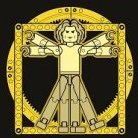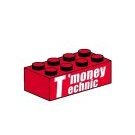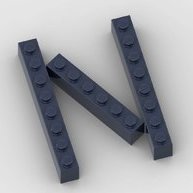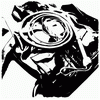-
Content Count
382 -
Joined
-
Last visited
About Attika

- Birthday 03/08/1977
Spam Prevention
-
What is favorite LEGO theme? (we need this info to prevent spam)
Technic
Profile Information
-
Gender
Male
-
Location
UK
-
Interests
Technic, Studless,
Extra
-
Country
UK
-
Special Tags 1
https://www.eurobricks.com/forum/public/style_images/tags/technicgear2.png
Recent Profile Visitors
-

Fluffy, an oversized proof of concept
Attika replied to Attika's topic in LEGO Technic, Mindstorms, Model Team and Scale Modeling
Hi Nikola, This is the only version of the wheel. I've built it, it did work, so there wasn't an urge to further optimise it. Strange question. There is 3 different type of answers to that comes into my mind: 1 Smartypants type: The bigger the wheel, the larger obsticle it can clear. 2 Arrogant type: Cos u r a genius and we aren't... 3 statistical typeThe last places were for people like me, who melted the axles b4 get through the finish line. And answering your deleted question: It is nearly 3 kg of abs with substantial speed. I feel like the current setup is very near to he limit where the material and connections still can handle the physics of it. More motors, more buwizzes make it heavier and probably faster, increasing the momentum. And I'm sure that is the point where parts start to break.- 19 replies
-
- rc
- brickbuilt wheel
-
(and 1 more)
Tagged with:
-
Another Brick in the World started following Attika
-

Fluffy, an oversized proof of concept
Attika replied to Attika's topic in LEGO Technic, Mindstorms, Model Team and Scale Modeling
I'm busted. Yep, long time ago, but Fluffy never had this problem. The only care it requires is on the side of the body. A connector slips out every now and then. If you watch the video, on some footage its visible. Once you see it, you can't unsee it. It has a cumulative 2-2.5 hours in it, so in lego therms I can call that a long range test period. One thing is sure, it doesn't like snow. Took it out this winter and in 5 second shoved all the snow on the top of the buwizz units. So did I.... The only way to "break" the wheels if I hit a curb, wall, or anything biggy with high speed. Hence there is no off road footage (Imean rocks and bigger obsticles), the grassland is its real home. A golf course would be paradise. Yes. And decided not to do. As you see on the video, on grass it has pretty good traction, but I'm sure due to the size and speed, if there was any more traction, all the sideway forces would come down to the wheelhub. This way it can slip those lateral forces out and no bricks get harmed.- 19 replies
-
- rc
- brickbuilt wheel
-
(and 1 more)
Tagged with:
-

Fluffy, an oversized proof of concept
Attika replied to Attika's topic in LEGO Technic, Mindstorms, Model Team and Scale Modeling
Indeed,it was hard to find a fitting box for trasporting it to and from the exhibition... Heart warming worrds from a living legend... I am humbled. Elephant? If that was the autocorrect, it really knows it's ways it is all black on the real one, so I made a rainbow render, hope it helps.- 19 replies
-
- rc
- brickbuilt wheel
-
(and 1 more)
Tagged with:
-

Fluffy, an oversized proof of concept
Attika replied to Attika's topic in LEGO Technic, Mindstorms, Model Team and Scale Modeling
Hah! Thx! Sure. I remember measuring some 18 cm (the model is on the AMTS show, away from me) , but the studio model info says 20.3. Being abarrel shape can explain this x-file I suppose. Then there are two of us now... I was trying to avoid claiming anything like this, as it felt so obvious after the idea appeared, I was sure it is already out there somewhere. I still hold this belief.. Thanks Sir.- 19 replies
-
- rc
- brickbuilt wheel
-
(and 1 more)
Tagged with:
-
Attika started following Fluffy, an oversized proof of concept
-

Fluffy, an oversized proof of concept
Attika posted a topic in LEGO Technic, Mindstorms, Model Team and Scale Modeling
Hello there, it's been a while.... I wasn't entirely inactiv in the last couple of years, but I had a technical difficulty to make videos. Without videos there's no point to post anything, so there it is,a big chunk of can't do attitude... However it has changed. The subject of this topic is on an exhibition now and I was forced to overcome my lazyness and make that camera roll again. To the subject: How did I get this low? I've bought 2 sets of this Audis back in the day as I've found it being a good value for money as a partpack. As a sideproduct I had enough of the curvey panels to get physical on an old idea, the barrel like structure you see on the thumbnail above. Luckily my past granted me an unlimited supply on connectors. As long as it existed only in my head, I was quite sure it is too flimsy and fragile to bare any load, let alone to coop with the centrifugal force that comes with the rolling motion. While rolling around the empty barrel on my desk I figured I could use a somewhat symmetric structure to apply an inward tension on the barrel and that's gonna keep it from falling apart. The fact that the barrel made out of 16 panels made it kinda obvious what symmetry should I use. I put my bet on a 4 spoke solution. The barrel would give a 15.5x15.5 stud square to work with, so I've used a 15x15 structure to reach that inward tension. It is well within the reversible flex of abs, yet enough to keep the circle from pulling apart The next challenge was the attachment of the wheelhub. There is an interlocking frame that holds the sprocket wheel in the center of it.... And so to prove the concept, I had to build a whole chassis around it. For those of you who can benefit from a studio file, here it is: https://drive.google.com/file/d/1uX-avOl3x6DPfGcx_IF1nKzRtAwWqvu6/view?usp=sharing As a sidenote, the io model is a simplified version when it comes to the chaos I've built in the mid section of the frame to avoid the twisting of it. Also I took advantage on the natural flex of the connector body which could not be replicated in the rigid studio enviroment. But I can assure you, no parts were harmed. Some of the data: It is about 70 cm long and 50ish wide, has the ready to run mass of 2.7kg. Uses 4 buwizz motors to drive, a PU L motor to steer and 2 buwizz 3units to get the sparks. Originally I've built it using the slow outputs but on the 2nd testrun I had to try the fast outputs on the motors and it took it like a champ. Although it altered the driveshaft geometry slightly, it had next to no effect on the practical usage. I can't emphasise enough that this car is only a tool to prove the concept of the wheel here. To keep the buwizz units from shuting down, the max output is reduced to 92 percent. This setup gave me fun to play dinamics and a very generous 10 minute + runtime. Way more on both than what I've expected at the begining. The chassis I suppose speeks for itself, nothing out of the ordinary. The lower wishbones have a wider base towards the chassis to deal with the frontal forces. No drivetrain -no loss of efficiency on gears. One thing to mention to fellow builders: I had so much room to work with inside the wheel, when I was building the front suspension, I couldn't stop smiling how effortless to do a "proper job". Meaning caster, camber, and ackermann geometry... Nothing else really comes into my mind, but I'm sitting on this for a half a year now,so I might just be numb about otherwise important details. I'm happy to answer your further questions. Thanks for your attention and feel free to give a honest feedback. My psychiatrist prepared me for situations like this. PS: If you find the panels on the wheels looking suspicious, that's the tape I applied on them to save them from the scratches (as much as possible).- 19 replies
-
- rc
- brickbuilt wheel
-
(and 1 more)
Tagged with:
-
-

[MOC] GRUMBLER
Attika replied to CharlesD's topic in LEGO Technic, Mindstorms, Model Team and Scale Modeling
Thanks for the video. It certainly sounds like the buwizzes are overloaded. For a start I'd experiment by changing gear ratios to make it slower. In case it solves the problem, there is your answer. 2 kg is quite a weight for the current gear ratios. -

[MOC] GRUMBLER
Attika replied to CharlesD's topic in LEGO Technic, Mindstorms, Model Team and Scale Modeling
Yes we do. Surely less than in a bad design, and just slightly more than the theoritically best possible. Don't let the perfect be the enemy of the good. On this specimen the suspension travel is limited if the steering is in that extreme position if I'm not mistaken, the link slips under the frame and two will collide . I do understand it is a "mockup", but I find that being a very convenient excuse after such a harsh criticism in your first reply on the topic. Steering only? You really want us to beg to see it running around in your kitchen? -

[MOC] GRUMBLER
Attika replied to CharlesD's topic in LEGO Technic, Mindstorms, Model Team and Scale Modeling
Looks brutal indeed. Would be nice to see in action, that says more than a hundred words. On the subject of steering geometry, I did not see any problem, in fact it was a clever solution on ackerman geometry, but I had the benefit of the doubt as I'm geting rusty. Looked it up and it's almost identical setup as the Greyhound had, made by @Didumos69. Now as much as I remember, when it comes to geometry, he knows his way around that subject, so I respectfully disagree with @romashkaman. (apart from the position of the kingpin, but that is on the choice of the built hubs) -

[MOC] Trial Unimog - Zetros (42129) alternate
Attika replied to gyenesvi's topic in LEGO Technic, Mindstorms, Model Team and Scale Modeling
-

[MOC] Trial Unimog - Zetros (42129) alternate
Attika replied to gyenesvi's topic in LEGO Technic, Mindstorms, Model Team and Scale Modeling
It is plastic only on the end of the day, so you may rightly expect some wear. with safe design, it canbe reduced though. Appears as withe powder around axles rotating in the holes of beams or frames. I go with silicone based lubricant. Namely WD-40 has a silicone spray that used to use. Didn't experience any negative consequence yet, although I'd use the verb "reduce" instead of "eliminate". Got to accept that every magic comes with a price. :-) It is sand you wanna keep those cv's away from. No lubricant can help against that. -

[MOC] Trial Unimog - Zetros (42129) alternate
Attika replied to gyenesvi's topic in LEGO Technic, Mindstorms, Model Team and Scale Modeling
Amazing build, hats off, really, regardless of any steering questions. :-) I've never took the challenge to build alternate models due to the limitation on parts. There is enough compromise to make in a building process, could not handle a self inflicted one. :-D Considering that, I feel like the way you've designed the (1st) steering mechanism is ok. Although @Igor1 is making a valid theoretical point on the geometry (and hereby I'm thankful for him, carrying this flag in my absence) I'm more apologetic in this case for a few reasons: - Limited part usage (as mentioned above) -On the video it did not come accross as bad as I've expected. In fact I hardly even noticed the problem. (I've read the topic first, then went for the video) Might be due to the freeplay of the frictionless pins are counteracting and the steering lock is also modest. -Without differentials.... :-) a small anomaly in the geometry doesn't even tickle my nerves (don't get it wrong, I totally agree with the no diff policy, you've applied) - and finally, probably you did something here what is sort of common in similar designs. I've came across some rc rock crawlers explicitly using the same, inverted ackermann setting, yet I can't tell if it is some clever stuff or budget cut on the engineers desk, so I leave it for someone who has a grasp on this question. I'm closing with a few words on the jerkiness of the new cv's in the 2nd design. My bet is on the lack of the differential. In this setup the rotation difference between the two front wheels is high enough to make one of them skid in the corner, this could manifest as a periodic hop of the given wheel. I think that can be confused with the cv's limit, but I doubt the latter. If you can test it by making the 2 wheels independent from each other for an experiment... I didn't have this problem in models with diffs. Anyhow, it is up to personal taste I suppose, when it comes to smooth rollin', but I can assure you, it takes way more to damage the cv or the hub. As a reference, I offer my video, titled "wannabe tatra" to your attention, with the sidenote, that those hubs and cv's are still fully operational. As a rule of tumb, 45 degrees doesn't hurt them. 1200 rpm in the other hand does ;-) if lube not applied Great job again -

42129 Mercedes-Benz Zetros rear axle issue and fix
Attika replied to kbalage's topic in LEGO Technic, Mindstorms, Model Team and Scale Modeling
Confess, you heretic! That tyre of yours has an unnatural belly. It is forced to a slightly bigger rim than it supposed to be. Now I know I'm the last one who should comlain about that (I've got a past ) but that printed rim isn't the same size as the lego counterpart, is it? -

42129 Mercedes-Benz Zetros rear axle issue and fix
Attika replied to kbalage's topic in LEGO Technic, Mindstorms, Model Team and Scale Modeling
The inner diameter of this rim is less than 5 studs, so an offset rim could not take the hub. -

42129 Mercedes-Benz Zetros rear axle issue and fix
Attika replied to kbalage's topic in LEGO Technic, Mindstorms, Model Team and Scale Modeling
Hi, I'm glad you appreciate my brainf4rt. Sorry for not reacting back then when you posted the G-wagon. I had the look, I just didn't react. My bad. It is my pleasure. wow, hold your horses! You're going to regret this question, I promise. Sooo, diff lock on the front is virtually imposible at the given width of the axle. Because of the steering, the hubs need to be held by the ball joints. That is only possible by using the 5L ball socket ended steering arm which is going to collide with the differential if -like at the rear axle- the 7x11 frame is being used to brace the mechanics. Even if this problem would go away, there is not enough room beside the 7x11 frame to connect any steering rod to the hub. My opinion is that by keeping the original dimensions of the axle, it cannot be done (properly, at least). I've scheduled to rebuild the whole chassis, using the bigger tyres and conveniently use the defender rims. That offset rim gives me another 2 studs on width and beside I'll give an additional 2 studs to compensate for the tyre size and make sure it does not rub against the chassis when the steering is at full lock. That seems to be quite manageable (says my Dunning kruger). Up to the news: Today I woke up and made the front axle even shorter by a stud. (If I had a month probably I could make it disappear as a whole ) That's how it looks: Also some hastily made instructions: https://drive.google.com/file/d/1Ql2Sd7b39LiXBh8JkXBaguNJQFYa1XMq/view?usp=sharing Some additional changes I made on the front of the chassis: 1. Eliminated the panhard rod, changed the 3L axles with stop to 4L ones and by sticking them from the outside, could connect the two sides with that red connector assembly. It stiffened up the whole structure making the panhard rod redundant in it's function. 2. changes the springs to soft ones (all 4 of them) it lets the axles flex way more than the hard ones. The front end therefore is "floating", siting in a bit more than half on the suspension travel length. I'm happier with it this way, but it is mainly a personal preference. Do as you like. 3. Lifted the panel on the bumper by one stud (by taking out a 9L beam). It meant to compensate for the slightly lower stance caused by the softer springs. That's it. Have a good time with the set guys, I go back to my cave now. Bye Please keep in mind: This is my take on the subject, made in a very limited time window. The design may contain some solutions which satisfy my taste, yet can disturb others. Time and users (preferably @Didumos69) will tell if it is good enough or not. -

42129 Mercedes-Benz Zetros rear axle issue and fix
Attika replied to kbalage's topic in LEGO Technic, Mindstorms, Model Team and Scale Modeling
So, I had a go on this problem and in advance I have to say it is a compound problem, hence it requires some dissection. 1. The designer states in his related video that the steering lock is limited to about 30 degrees to protect the cv joints. I -respectfully- tend to disagree. Personally I've found the best point of these joints at their debut is the max working angle is around 40 (+) degrees. Since then I've built them in many application and never came across any problem in this regard. 2. In the same video the ackermann geometry is mentioned to be used to improve the steering lock. Sadly it does not do the job, here is why: - The angles are not correct. If the wheelbase was the half of what it is, the designed angles would be moreless accurate, but at the current distance between the axles the given angles are too high. Having this kind of excessive ackermann geometry is even worse for the the steering lock as having no ackermann built in the design. Why is it worse? - If the maximum angle for the cv is given, it means -with ackermann steering- that the inner wheel takes that maximum angle. The angle of the outer wheel is going to be lower by defenition. So we've got 30 degrees inside and 26(ish) outside. Due to the reason that these angles don't line up with the wheelbase, it means, one of the front wheels going to skid sideways when cornering. Usually it is the inside wheel with the higher angle that is skidding, so our practical steering angle is down to 26(ish) what is represented by the outside wheel. The rest of the problem is in the code. Using the PU profile (first time I did btw) there is a callibration process to go through. At this the motor takes both endpoints and settles at the middle point. When it comes to playtime however the maximum angle is lower, I assume it is to protect the components. Nevertheless it also decreases the steering angle. And now to the good news: To be honest I forgot to measure the original turning circle but I had two sources to get data. The designer states it is 195cm and @Sariel's gadget displays something over 2 metres (would have been useful if you show us the method instead of playing with the cat) Anyhow, I've rebuilt the front axle taking out the ackermann design from the equasion and connecting the steering rods one stud closer to the hub pivots (basically where it supposed to be by default). This gave me about 20-30 cm decrase on the diameter of the turning circle. A bigger chunk has been chopped of from this number by using the BrickController2 app made by @imurvai (God bless him). This method of control doesn't apply safety measures, it just does what you want. The end result is 90cm diameter between the inside wheels (130cm between the outside ones) A humble demonstration: I'll make a stud.io file soon and link it here.








.thumb.jpeg.ee9f4c610e20ae266cdf7b2b392449f6.jpeg)

(908x505).thumb.jpg.5d423220399ef7704d3278bf10c6b6f2.jpg)